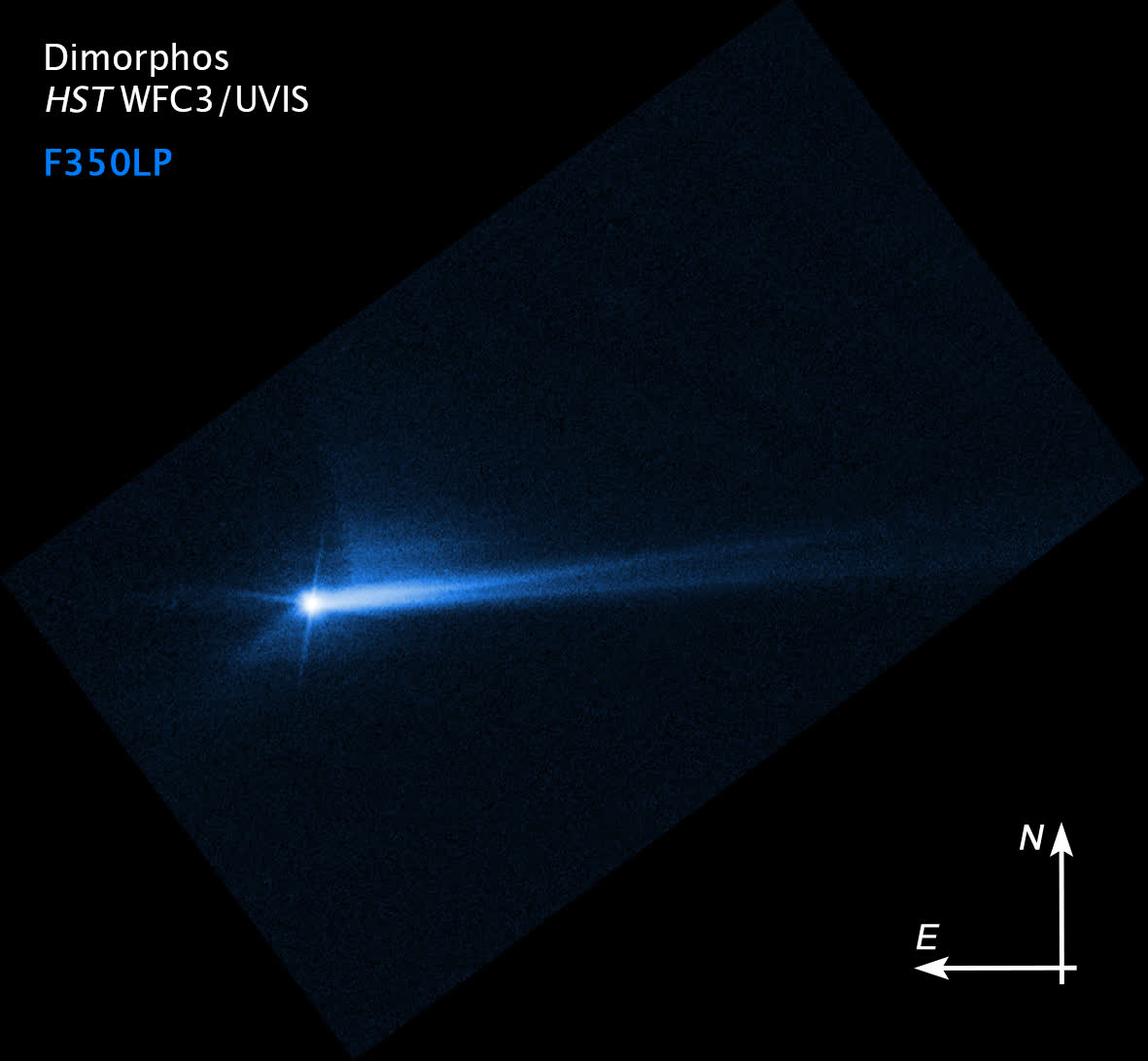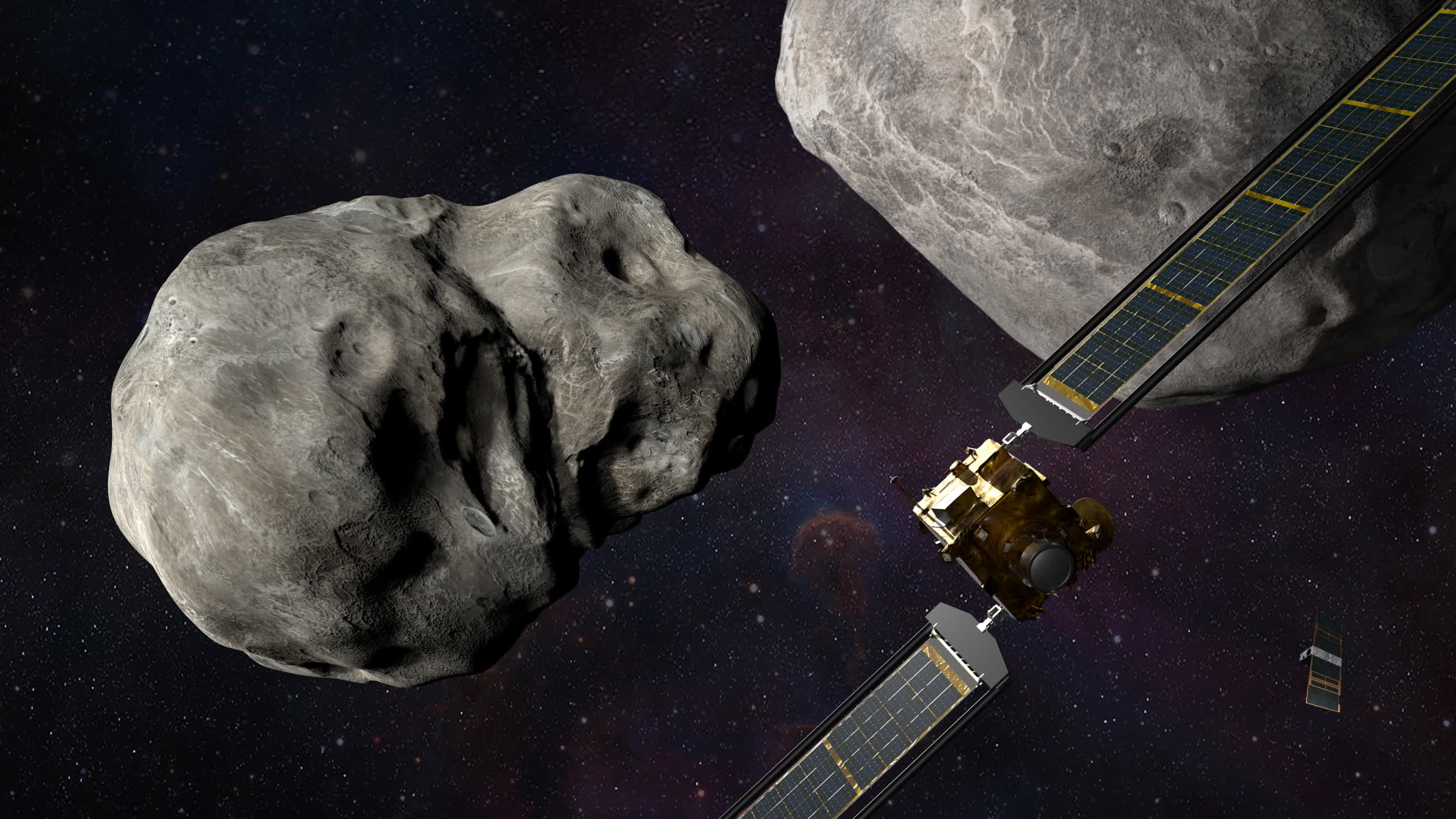Why it matters: After the successful impact of the NASA spacecraft on Dimorphos, researchers are still analyzing data to find new insights into the impact aftermath. Newly published studies confirm how (and why) the asteroid orbit was changed more than expected by initial calculations.
NASA's Double Asteroid Redirection Test (DART) mission was our first attempt at deflecting a celestial object by launching and crashing a spacecraft into an asteroid, and that mission was a resounding success. The orbit of a small asteroid called Dimorphos was altered much more than expected, and now scientists are finding out the reasons by studying the trove of data collected during the experiment.
Dimorphos is orbiting a larger object called Didymos, and neither are posing a threat to Earth. Other asteroids or comets could become a threat to our planet, however, so a mission like DART can provide the scientific community all the data needed to prepare a truly effective "planetary defense strategy" based on deflecting impacts.

The DART spacecraft collision with Dimorphos' surface shortened the asteroid's orbit by 33 minutes, as the asteroid now orbits Didymos in less than 11 and a half hours. Four new studies about the impact have been published in the March issue of Nature magazine, highlighting how much the amount and physical properties of ejecta (the debris expelled from impacts) were instrumental in achieving this higher-than-expected result.
The recoil and ejecta created by the impact significantly contributed to Dimorphos' altered orbit, one paper says.
A second paper estimates that the material expelled from the asteroid's surface contributed to the change in momentum by a factor between 2.2 and 4.9. Another paper highlights how the ejected material formed a comet-like tail behind Dimorphos, turning the object into a so-called "active" asteroid.
According to Tony Farnham, Principal Research Scientist at the University of Maryland (UMD), the new papers are just the "very first results about the DART mission to be published," and dozens of studies are still underway. Scientists need to further understand the "impact and implications" of DART from a planetary defense perspective, while they are uncovering "more interesting phenomena" about the mission.
Derek Richardson, a professor of astronomy at UMD and a DART investigation working group lead, said that while we can't stop hurricanes or earthquakes yet, we ultimately learned that "with sufficient time, warning and resources" we can definitely prevent an asteroid impact. A relatively small change in the asteroid's orbit would be enough, the DART mission has confirmed, to prevent "large-scale destruction from occurring on our planet."
